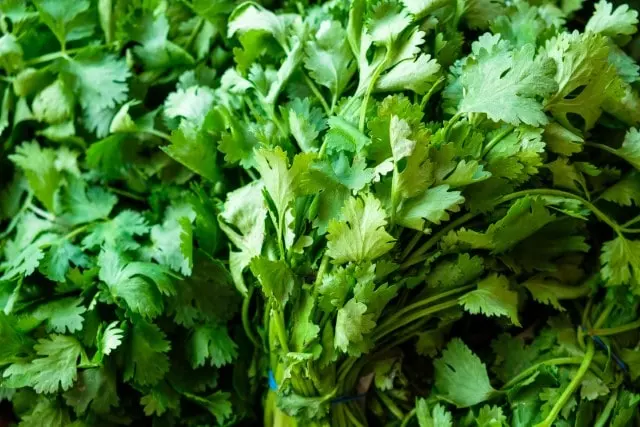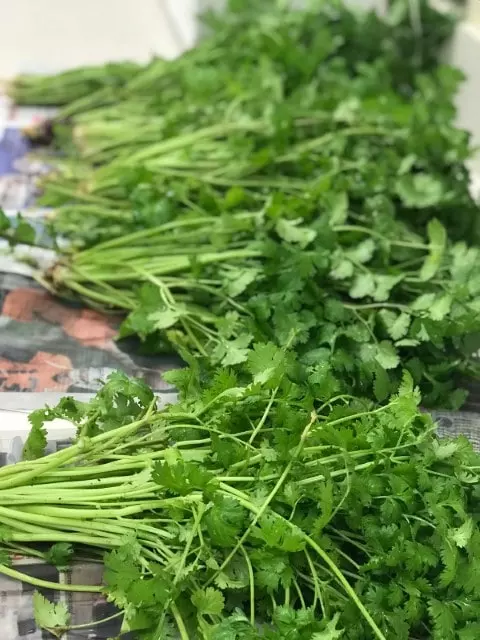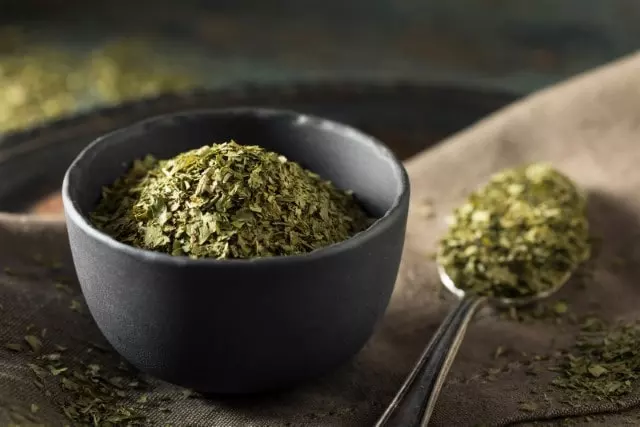Cilantro should be harvested from both leaves and seeds, and depending on which one we are talking about, the times will also be different. In this article, we will explain how to harvest cilantro without killing the plant.
Cilantro is easy to grow and does not require much care. If you harvest cilantro correctly, you will have fresh cilantro for a long time without killing the plant. Learn more about How to Grow Cilantro in Water.
Table of Contents
When to Harvest Cilantro Without Killing the Plant
When to Harvest Cilantro? Cilantro is harvested when the plants have been growing for 4 to 6 weeks and have young green leaves. Plants should be about 6” (15 cm) tall. Depending on conditions, cilantro plants can be harvested in 4 to 6 weeks.
To harvest the seed of the cilantro, we must wait until the end of its life cycle. Generally, this occurs between the 16th and 18th week.
How to Harvest Cilantro Without Killing the Plant
How to Harvest Cilantro Without Killing the Plant? You will be able to harvest the cilantro without killing the plant when the cilantro is about 6″ (15 cm) tall, this will be approximately 4 to 6 weeks after planting. You should carefully harvest the cilantro so as not to damage the plant and allow growth to continue.
When harvesting cilantro, is sure not to cut too deeply and not to harvest too many stems. If you harvest cilantro wrong, you will cause the plant to grow more slowly, and then you will not have much cilantro to harvest. It is very important to know how to harvest cilantro without killing the plant to ensure constant and abundant production.
The most important thing when harvesting cilantro to avoid killing the plant is to use a sharp, disinfected knife or scissors. A perfect cut in cilantro will ensure the constant growth of the plant.
That is why you will be cutting cilantro stems that are 6″ (15 cm) long so that the plant will continue to produce, and you can harvest for a longer period. If you let the plant grow for 100 days or more, the plant will flower and then produce seeds that are also edible.
A good way to harvest cilantro without killing the plant is to harvest the outer stems and let the center stems grow. You should of course harvest the inner stems, but try not to remove all of them.

How to Store Cilantro
How to Store Cilantro? If you store fresh cilantro correctly, it can last about 2 weeks in the refrigerator. You should also freeze them for 4 to 6 months, or even dry them for 6 months to a year.
How to Store Cilantro in the Fridge
Chop half of the cilantro stem, then wash it with plenty of water. Use a spin cup to dry the cilantro, if you don’t have one, shake the cilantro and then dry it with paper towels. Leave it for about 10 minutes in the open air to finish drying.
Once dry, separate the cilantro into several bunches and wrap them in paper towels or absorbent paper. You must make two turns.
Put several wrapped bunches in an airtight bag, but they should not be tightly packed.
Put the bag in the coldest area, this way the cilantro can keep its freshness for 2 weeks in the refrigerator.
You should also put the cilantro inside an airtight container, in this case, it should not be wrapped with kitchen paper, but you should line the entire container with paper.

How to Dry Cilantro
One way to take advantage of cilantro and have it for a long time is to dry it or dehydrate it, which is a great way to preserve it without the need for a refrigerator. However, its flavor will not be as potent as when it is fresh.
You should dry cilantro in several ways:
Air-drying Cilantro
This method requires more time than the others. Chop the root of the cilantro, then separate it into several not too abundant bunches. Tie the bunches by the stems and hang them in a dark and ventilated place, preferably where it does not accumulate a lot of dust.
After a week, the cilantro should be dry. It will be smooth when you squeeze a leaf, and it crumbles in your fingers.
Dry the Cilantro with a Microwave
Once the cilantro is clean and dry, spread a bunch on a sheet of paper towel and put another piece of paper towel on top of it. Microwave it for one minute, then do 30-second batches until it is completely dry.
Dry the Cilantro with a Food Dehydrator
Set the food dehydrator on the lowest setting and dehydrate for 2 to 4 hours, until the leaves are crumbly to the touch. When they are dry, carefully remove the cilantro from the equipment.
Dry the Cilantro in an Oven
Prepare a tray with waxed paper or nonstick foil, and place the cilantro on top. Set the oven to the lowest temperature it will support and bake for 1 to 2 hours. Once the leaves fall apart when touched, you can remove them.
To store the dried cilantro, crush the leaves and put them in a glass jar with a tight-fitting or screw-top lid. You should place the jar in the pantry, in a dark, dry, and cool place for 6 to 12 months.


